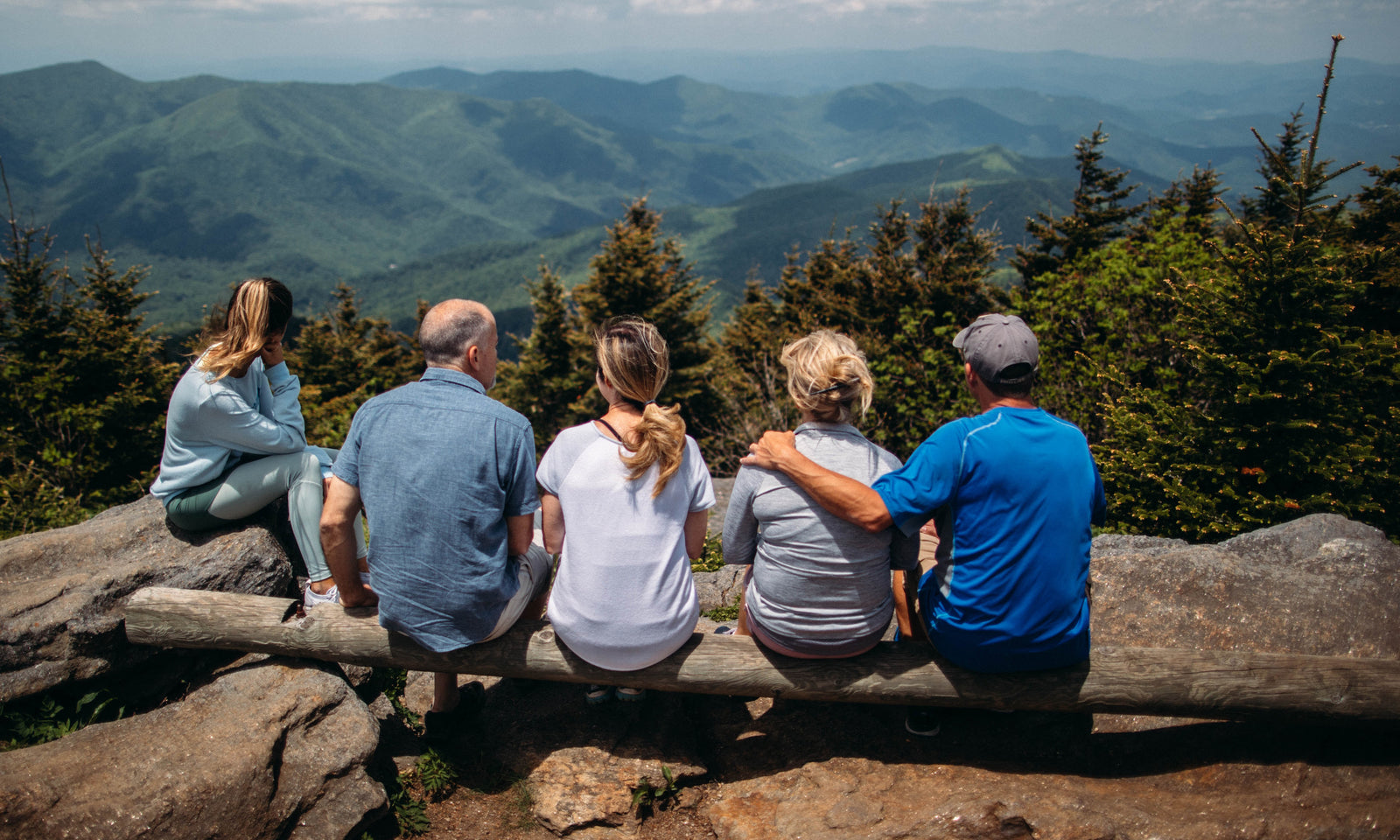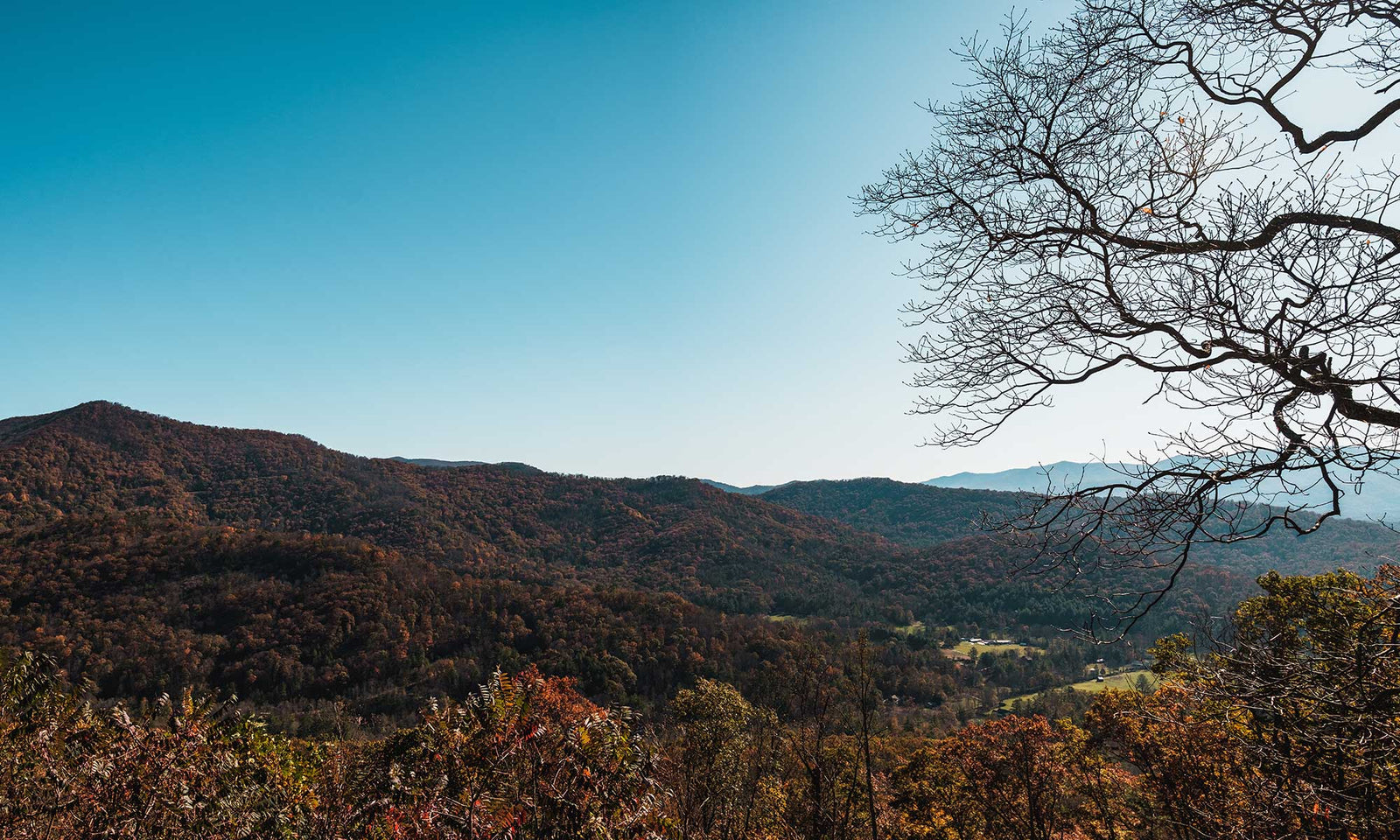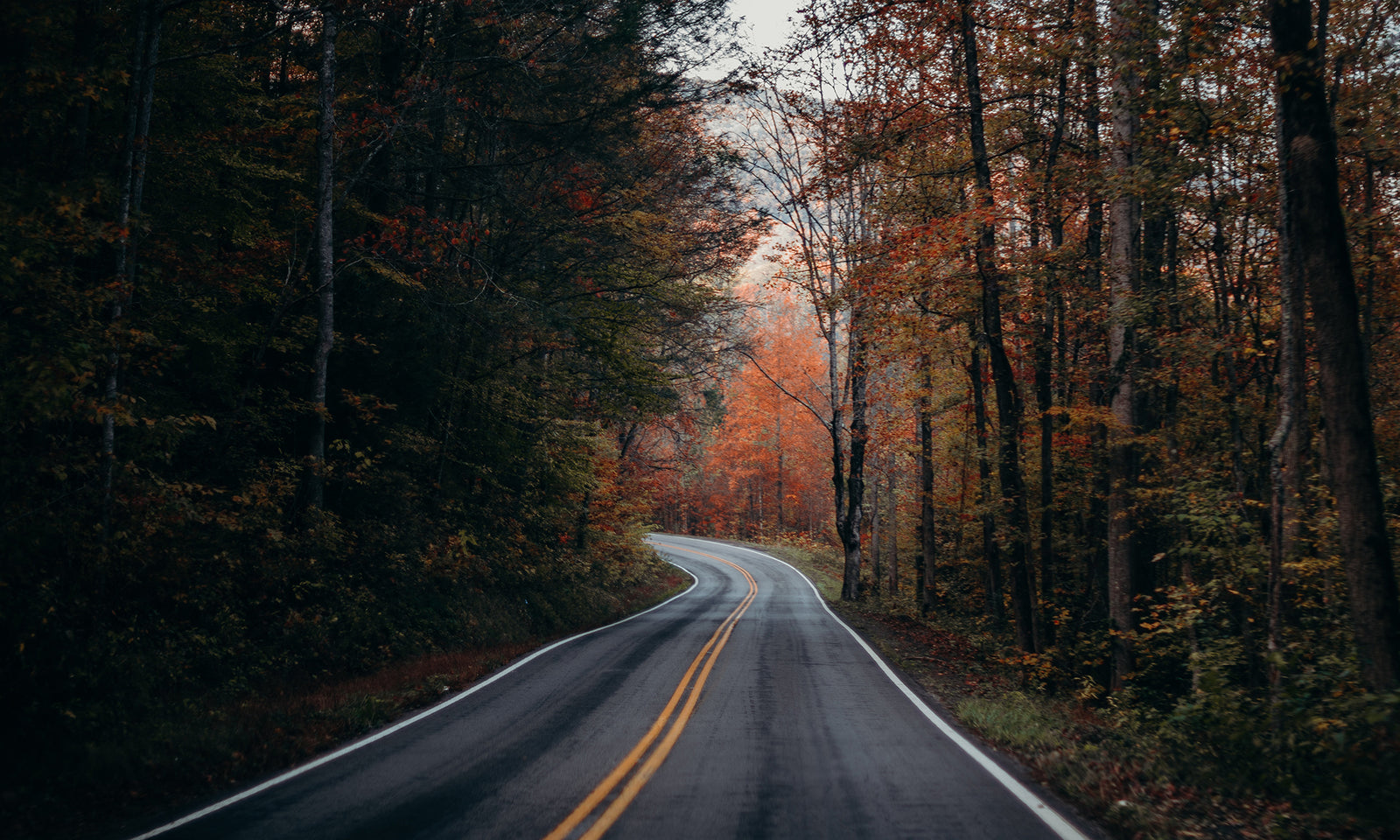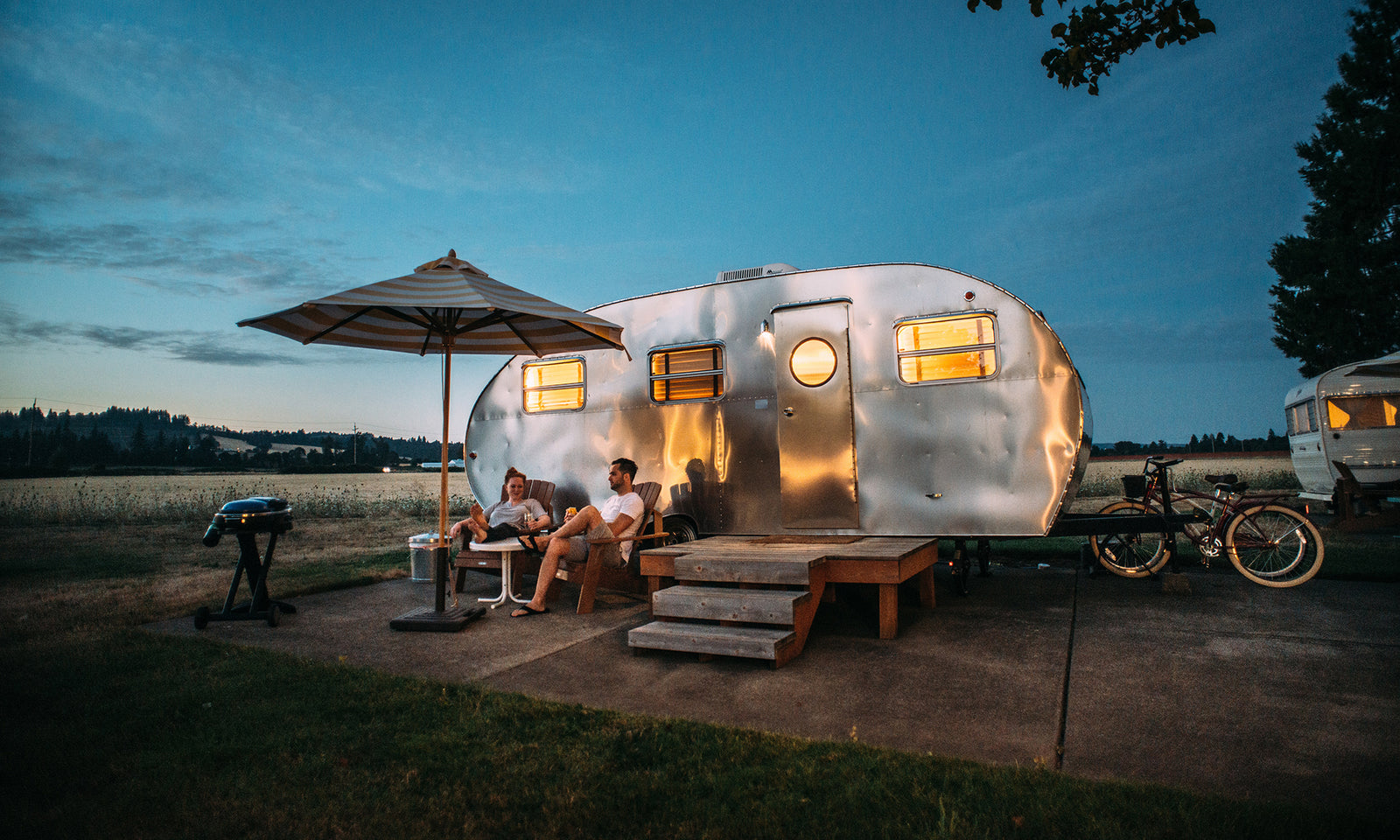
There are few places in the US more romanticized than The Blue Ridge Mountains. And for good reason, too. The Blue Ridge Mountain region plays the role of both cultural time capsule and living, breathing icon representing the ideals, the hard work, and ingenuity that America was founded upon, and that live on to this day.
As part of the larger Appalachian Mountain range (birthplace of country and bluegrass music, modern racing, and distilling) a visit to the Blue Ridge Mountain range is a crucial part of experiencing the fullness of The American Story. “But,” you say, “The Blue Ridge Mountains cover a huge area! Where do I even begin!?” And that is a very, VERY, valid question. Arguably, a wayfaring traveller could spend a decade exploring everything to do, see, and taste in this region of the country. But sadly, we don’t have a decade, so over the next few installments I want to point out some of the must-see’s, must-eat’s, and must-stay’s that are sure to make your adventure through the Blue Ridge Mountains truly unforgettable! But first, let’s get a little background on this little slice of American paradise.
Almost Heaven
If you’re totally unfamiliar with the Blue Ridge Mountains, it’s good to start with a little history of the area. As they say, you don’t know where you’re going until you know where you’ve been.
For all those armchair cartographers out there, the Blue Ridge Mountains are a range of mountains running Southwestly, starting in Pennsylvania and running through Maryland, West Virginia, Virginia, North Carolina, South Carolina, Tennessee, and finally tapering off in Georgia. To say this mountain range is huge, is putting it lightly.
Trees, Trees, Trees

Photo credit: Mitchell Kmetz
But what exactly makes this area so special? Is it something in the water? The Air? Well, to answer that question we have to go back a couple hundred years. When settlers first started moving west, they stumbled upon a beautiful mountain range that was unlike anything else they had ever seen in America before. This range offered unmatched beauty, solitude, and space, lots and lots of space. Affordable space. These settlers weren’t made of money, so finding cheap land to live on was a huge draw to this area. But the mountains themselves possessed a certain mystique to them: These mountains looked blue. Like, really blue. For years it was a mystery as to what causes this blue hue to linger over these majestic peaks, and many a tall tale was spun to explain the bluing phenomenon. But as exciting as some of those stories were, science has discovered the true culprit for this colorful display: The Trees. That’s right, the trees that cover the vast hills in this region release something called isoprene into the air that creates a bluish haze over much of the area. My arborist readers might be curious why this phenomenon happens and thankfully I come equipped with an answer! Scientists believed that this isoprene is emitted by the trees to protect themselves from the stress of harsh summer temps and blazing sunlight. But again, it isn’t the science or topography alone that make this region so magical, it’s also the people.
Play Me Some Mountain Music

Photo credit: Matthijs Smit
Under the protective canopy of this blueish isoprene these tree-lined hills would begin to become dotted with houses of all shapes and sizes, filled with people of all shapes and sizes, colors, and creeds. Now, these cultures that all called the Blue Ridge region home may not have shared certain traditions, skin color, or even a common language, but they did possess one thing in universal thing in common: Music. These folks’ love of music easily transcended cultural and language barriers. In fact, it was not uncommon for people of all kinds to gather and share their musical traditions with one another. This sharing slowly transformed into cross-pollination.
This mixing of English, Irish, European, and African musical traditions collided big time up in the Blue Ridge Mountains and would eventually meld together to create early building blocks for Country Music, Blues, Bluegrass, and eventually, Rock and Roll. Because of this, The Blue Ridge Mountains quickly became the epicenter of all things music. But these mountains aren’t only known for their musical mystique. They are also known for their dew, mountain dew, moonshine.
Moon Shining Bright Above Me

Photo credit: Kristen Wyman
The Blue Ridge Mountains also became very well known for its residents’ skills with the still. Corn Whiskey, rum, Schnapps of all flavors, and (My favorite because of its name) Newfoundland Screech, were distilled in the hills and sold to the folks in the hills. This was great business for local distillers.
But due to new taxation (of this once tax-free beverage) brought on right after the Revolutionary War, distillers and the Federal Government grew to become at odds with one another. If the distiller didn’t pay their liquor taxes they were instead labeled a “moonshiner.” The term moonshine comes from an English term meaning someone who does their work late at night, as many of these distillers did in order to avoid “The Revenuer Man.” Over the next century, the Blue Ridge Moonshiners and the Federal Government solidified a very rocky, very colorful feud. But it wasn’t until the early 20th century that things really started to heat up for these moonshiners.
During Prohibition in America in the early 20th century, moonshiners were the only ones producing booze. And just because the stuff was illegal didn’t stop people from drinking it! The rise of the Speakeasy (a secret drinking joint where people clandestinely met and partook of the unholy water together) made moonshiners the top of the heap at this time. But being in the mountains, and many of the speakeasies being down in the larger cities, these ‘Shiners needed a way to transport their booze from point A to point Be without being caught by the authorities. Thus, the rise of the Bootlegger
Bootleggers were the people who transported the booze from the Blue Ridge Mountains down into the neighboring dry towns. These moonshiners tapped into the local population of young and rowdy youths as their candidates for drivers. These youths were taught to become masters in the craft of outsmarting the feds. These drivers were fast, agile, and well equipped with vehicles chock-full of secret compartments and “hidey holes” to house their illegal liquor being transported.
A Need For Speed

Photo source: Library of Congress
Well, it’s impossible to teach a kid to drive fast and then tell him to stay still. When these boys weren’t hauling liquor and being chased by the Boys In Blue, they were bragging to one another about who was faster than whom. Out of this braggadocio came organized races amongst the drivers. Soon, some of these drivers began to truly shine as phenomenal drivers. Guys like “Reckless” Roy Hall and Junior Johnson, the latter who began bootlegging for the family business at the ripe age of 14 years old. These races would eventually collide with “respectable” car racers and meld together to form NASCAR.
Needless to say, The Blue Ridge Mountains can rightfully claim ownership for being the birthplace for some of the greatest American institutions.
But this is only the tip of the iceberg, my friends! In the next installment we’re going to explore some of the places and things you’ll be sure to want to mark on your maps to experience during your time in the Blue Ridge Region. Stay tuned!

Prevent Common Problems In Your Tanks!
From misreading sensors, preventing clogs, or eliminating odors, we've got you covered no matter how you camp! All our best holding tank tips and trick information plus more can be found conveniently in one place when you download our FREE Unique Method Field Guide PDF. Achieve holding tank bliss today!
Get The Free Download Get The Free Download



